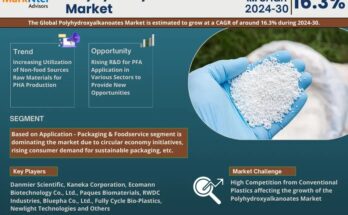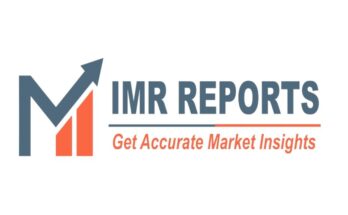Aerospace foams are lightweight, high-performance materials used in aircraft and spacecraft for insulation, vibration damping, and structural reinforcement. They offer thermal insulation, fire resistance, and shock absorption properties, enhancing safety and performance in aerospace applications. Common types include polyurethane, polyethylene, and phenolic foams, tailored to meet specific requirements such as weight reduction and thermal stability in extreme environments.
The aerospace foams market size is projected to grow from USD 4.4 billion in 2019 to USD 6.5 billion by 2024, at a CAGR of 8.2% from 2019 to 2024. The rising demand for lightweight and fuel-efficient aircraft have led to the extensive use of advanced materials such as PU foams and PE foams, among others, in the aerospace industry. The manufacture of advanced materials as well as new products launched by several prominent players for the aerospace industry is one of the key factors driving the growth of the aerospace foams industry across the globe.
Download PDF Brochure: https://www.marketsandmarkets.com/pdfdownloadNew.asp?id=128945153
Aerospace Foams Manufacturers:
Some of the leading players operating in the aerospace foams industry are BASF SE (Germany), Evonik Industries AG (Germany), Boyd Corporation (US), Rogers Corporation (US), FoamPartner (Switzerland), Armacell International S.A. (Luxembourg), SABIC (Saudi Arabia), ERG Materials and Aerospace Corp (US), UFP Technologies, Inc. (US), Zotefoams Plc (UK), General Plastics Manufacturing Company (US), Solvay SA (Belgium), Pyrotek Inc. (US), and Greiner AG (Austria) and others.
Aerospace foams are advanced materials of various cell sizes, capacities, and properties. The cell sizes of the aerospace foams determine the flexibility or rigidity of the foams and thus, dictates the application areas where they can be used. Aerospace foams are manufactured using various materials, such as PU (polyurethane), PE (polyethylene), melamine, metal, and PMI/polyimide, among others, which meet the flame, smoke, and toxicity (FST) standards in the aerospace industry. These foams are used in various applications in aircrafts such as seating, seals, gaskets, carpet pads, headrests, rotor blades, doors, windshields, cockpit instrument panels, wingtip lens, and several others.
Based on material type, the aerospace foams market has been segmented into PU foams, PE foams, melamine foams, metal foams, PMI/polyimide foams, and others which includes PVDF foams, PPSU foams, silicone foams, ceramic foams, PEI foams, PET foams, PVC foams, and polycarbonate foams. The PU foams segment has the highest market share in terms of both value and volume, among all the material type segments in 2018. It is projected to follow the same trend from 2019 to 2024 in terms of both value and volume. PU foams are used in a variety of applications ranging from seating, airframes, interiors, and packaging in the aerospace industry. The availability in different forms ranging from low to high density with varying rigidity as well as ease-of-use makes them compatible to be used in a multitude of aerospace applications. Some useful properties of PU foams include durability, lightweight, and recyclability. These factors support the rising global demands for lightweight and fuel-efficient aircraft, which is one of the primary drivers of the aerospace foams market.
Based on end-use, the aerospace foams market has been segmented into commercial aircraft, military aircraft, and general aviation. Commercial aircraft involves operating airplanes to transport passengers or cargos. The commercial aviation industry is the largest segment in the aerospace foams market. Additionally, the commercial aircraft segment is projected to lead the market in terms of both value and volume during the forecast period. Some of the key factors such as growing air passenger travel demand and the rising number of low-cost operators in the regions such as Asia Pacific, Middle East, and South America along with the recovery in global gross domestic product (GDP) growth, are resulting in the hike in demand for commercial aircrafts segment.
Inquiry Before Buying: https://www.marketsandmarkets.com/Enquiry_Before_BuyingNew.asp?id=128945153
North America, Europe, and Asia Pacific were the largest regional aerospace foams markets. The increasing global demand for lightweight and fuel-efficient aircraft has led to the growth of the aerospace foams market across the globe. The growth in this market is attributed primarily to the steadily increasing air travel rate worldwide. Increasing foam applications in the aerospace industry and technological advancements across the world are providing an impetus to the growth of the market. Various leading manufacturers of aerospace foams have adopted the strategies of expansions, acquisitions, new product launches, investments, new product developments, new technology developments, partnerships, mergers, collaborations, and agreements to cater to the increased demand for aerospace foams from various end uses.



